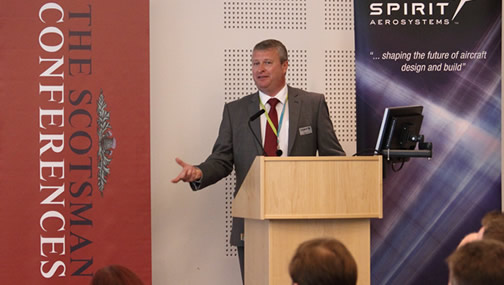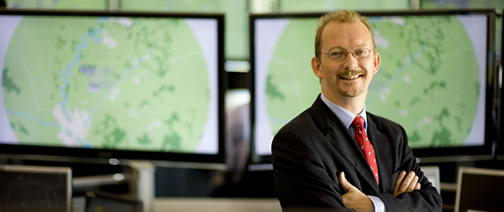The future of unmanned flight
10 September 2013Much has been made in the media in recent weeks about Britain’s place in the world. We may be a small island, but Britain has a rich history of innovation and a well-deserved reputation for invention, for surprising the world and for leading it.
The aviation industry is a prime example. 100 years before the Wright brothers it was Sir George Cayley, the Father of Aerial Navigation, who invented the glider – and bravely put his coachman in it to prove it would fly!
How much choice the poor man had in making his historic flight is not a matter of record, but he fortunately made it safely across Brompton Dale in northern England and Sir George made it into the early record books.
In more recent years, we have all benefited from Sir Frank Whittle’s genius in devising the jet engine, and Robert Watson-Watt’s ingenuity in inventing radar.
And still today we can boast that the UK aviation industry leads the world – from manufacturers such as Rolls-Royce and BAE Systems, to service providers such as British Airways, EasyJet and NATS.
Indeed, yesterday I had the privilege of giving the keynote speech at the opening of the National Aeronautical Centre dedicated to developing one of the industry’s most exciting technologies – Unmanned Air Systems – or UAVs as they’re more commonly known.
NATS is playing a central role in supporting the development of UAVs in the UK. In fact we’ve actually been controlling remotely piloted or unmanned air systems for more than 40 years.
There were UAVs flying as early as the 1920s. Most of the early ones were propeller-driven drones used at low level for military target practice.
Many are still military targets – but today they are jets flying 450 knots at up to 34,000 feet.
But, around the turn of the century the world of un-manned flight changed, and its potential was recognised. Everything from traffic news to wedding photography is now captured from lightweight UAVs. Their use for police surveillance work is also well documented.
NATS holds some of the world’s most respected expertise in unmanned flight management and we were instrumental in developing and validating the procedures for unmanned flight in UK airspace. It’s here that UK industry is really making history.
Last year QinetiQ, working with NATS, helped to establish a new flight test area on behalf of the Welsh Assembly Government. This is new airspace in mid Wales from ground level and, uniquely for the UK, a floating area from 10,000-22,500ft, stretching from the Irish Sea in the west, almost to the border of controlled airspace in Shropshire. It is an area of over 2,500 square miles for testing UAVs over land and water – and NATS is instrumental in integrating them with civil aircraft on a regular basis.

Watchkeeper by Think Defence via Flickr
Manned aircraft operate in this Class G airspace on the basis of “see and avoid” – something that UAVs are currently unable to do. At the moment we fly UAVs within solid radar cover where we can see it and everything else in the vicinity, and can control any interaction. We started gently – with 10 nautical miles separation laterally and 2,000ft vertically.
Today we are regularly managing the latest unmanned vehicles in this airspace, at 5 nautical miles and 1,000ft separation – exactly the same as our procedures for civil aircraft in controlled airspace.
I’m particularly thrilled because the aircraft in question is the Watch Keeper – a UAV I was personally involved in developing in my last role with Thales. And this is an aircraft with a wingspan similar to that of a twin engine Piper Seneca aircraft, full of advanced sensors and data links.
Now we’re embarking on the next stage which is more exciting still – UAV flight in controlled airspace. This is a world first and will put the UK right at the leading edge of UAV development.
UK industry and NATS has a team of people working on this development which presents a whole new horizon in terms of opportunities for this exciting technology.
We have been allocated SESAR funding to work alongside Thales UK and NLR (the Dutch aerospace and defence research agency) on an 18 month long project that includes simulations in April and trials in the summer. It opens up new realms of potential uses for unmanned flight, including search & rescue, fisheries protection and air freight transport. It is an exciting prospect.
We were also involved in another trial earlier this year which proved the principle of full integration. This was with ASTRAEA, part funded by BAE Systems that flew a Jetstream aircraft which was essentially controlled from the ground.
The aircraft flew several 500-mile journeys between Preston and Inverness, with take-off and landing controlled by a stand-by pilot onboard the aircraft, while some handling functions and all voice communications were handled from the ground station, with NATS providing ATC services.
All the flights were completed safely, with ASTRAEA and BAE Systems gathering vital data for their ongoing trials.
There are other considerations as well, of course. At the moment remote pilots are not subject to any kind of licensing and it takes time to assess the competence levels of different pilots.
This is why we started with double the separations and why we have taken every step slowly along the way to where we are today – and I don’t think anyone at the turn of the century would have expected us to be as advanced as we are.
Capability-wise we could integrate UAVs fully into controlled airspace today. We’re that confident with it. So the future for unmanned flight seems almost unlimited. I say “almost”…
We of course still have some way to go before we see remotely piloted passenger flights. We may not mind a remotely driven train, but leaving the ground without a pilot is a stretch the paying public are probably not quite ready to take.
However, I am certain that in time even those challenges will be overcome and that the UK will continue to be at the forefront of this very exciting technology.
Comments
Please respect our commenting policy and guidelines when posting on this website.





